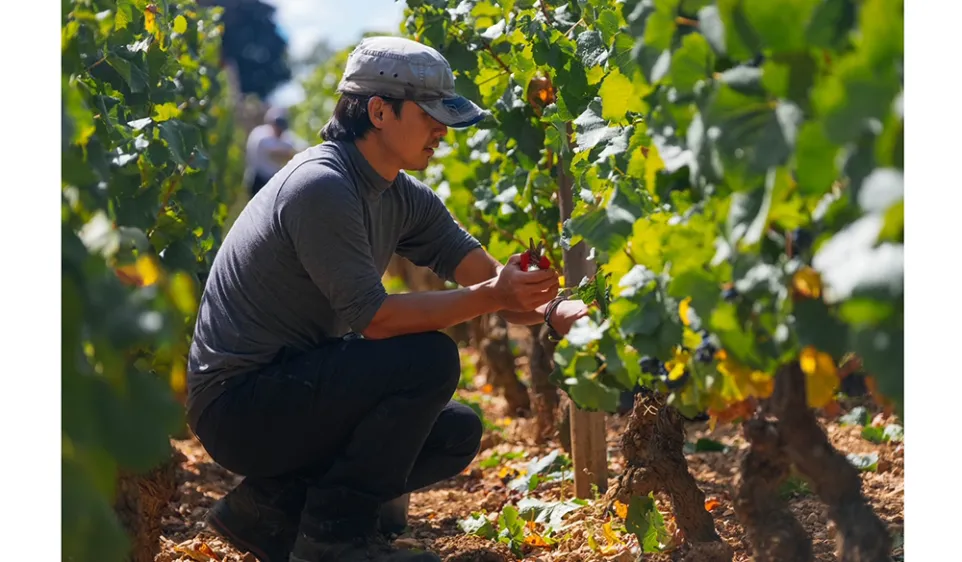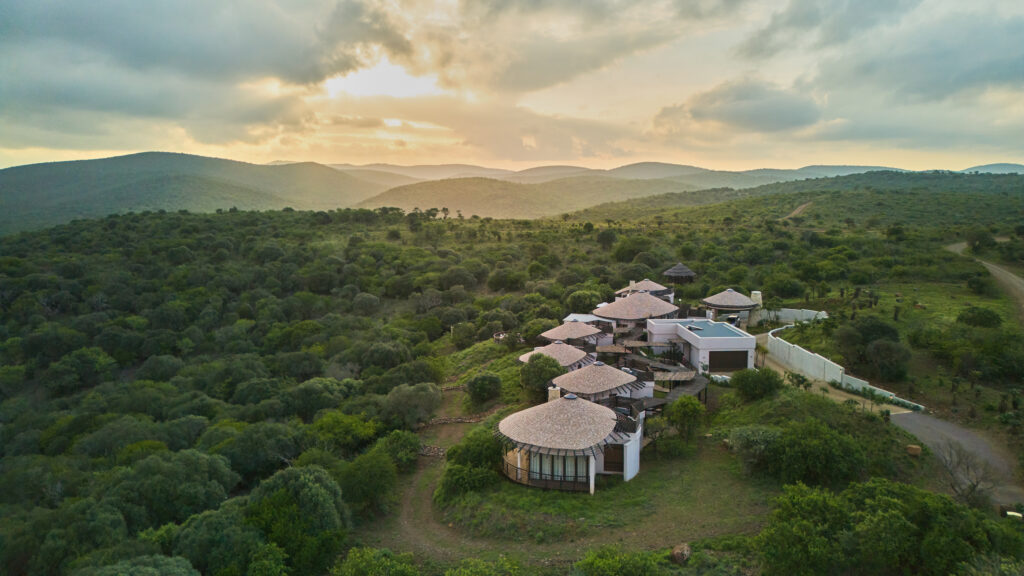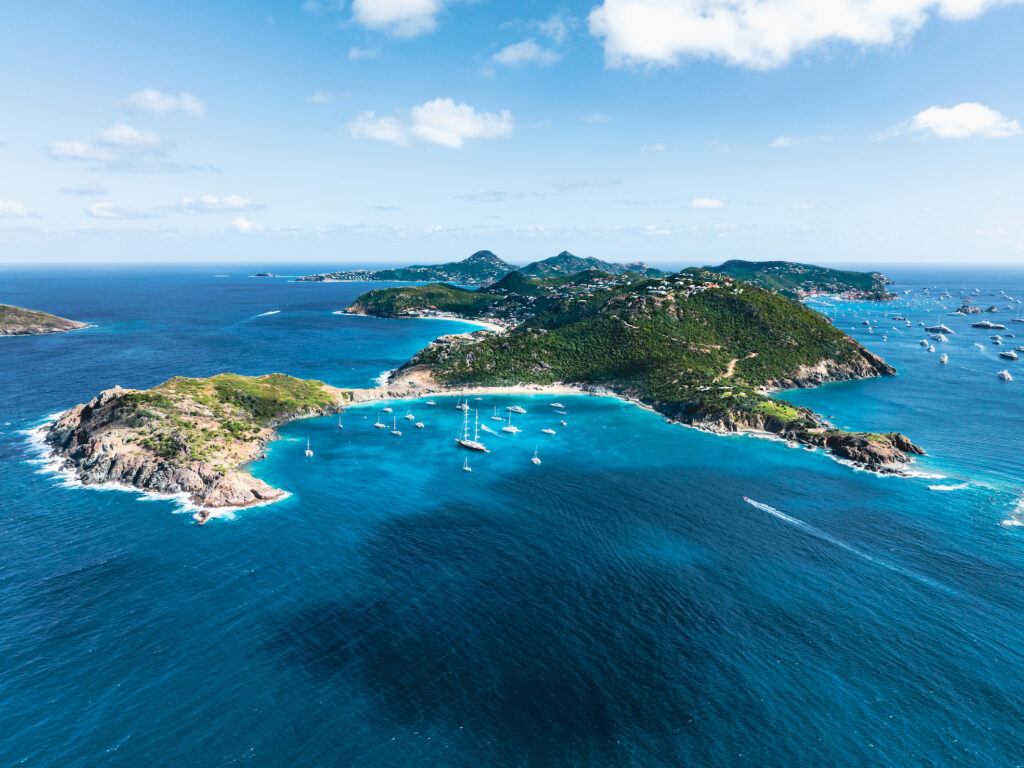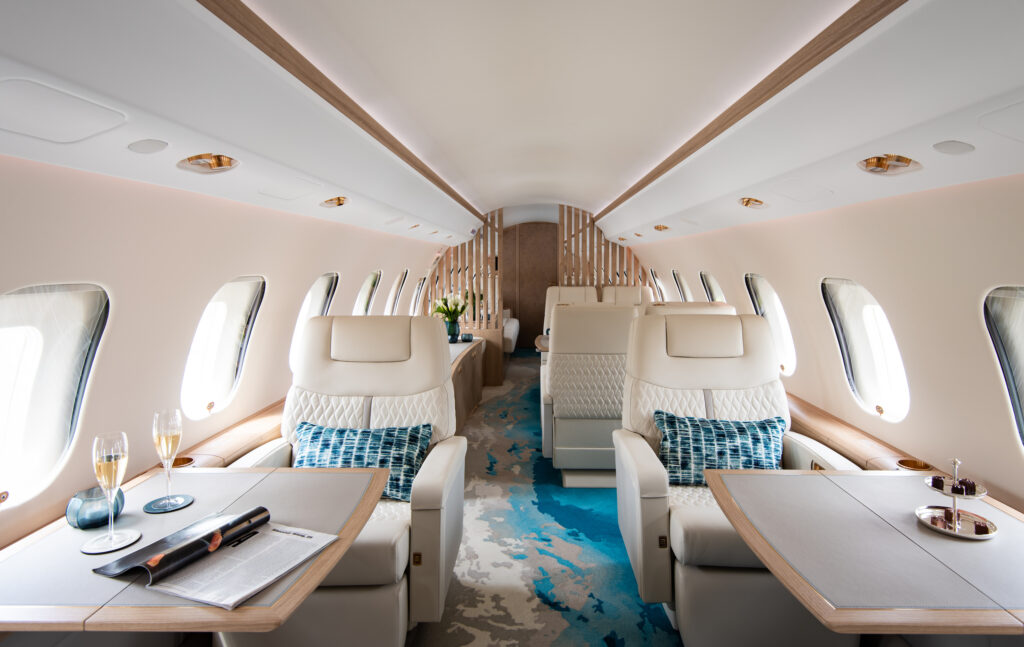Lewis Chester DipWSET meets the Japanese micro-négoc winemaker who is making waves in Burgundy.
When I heard through the collector grapevine that there was a new Japanese winemaker making extraordinary wines in Burgundy, I made it my mission to arrange a visit to his winery. Luckily, one of his importers, Andrew Pavli at Wimbledon Cellars, is a friend and was more than happy to oblige. Finding very little online about Kei Shiogai or his wines—other than the very high price tag the wines were fetching—I didn’t know what to expect. Indeed, there are no publicly available photographs of Kei’s face, which I would later find out was deliberate, creating a certain mystique around him and his wines.
One Man & His Dog
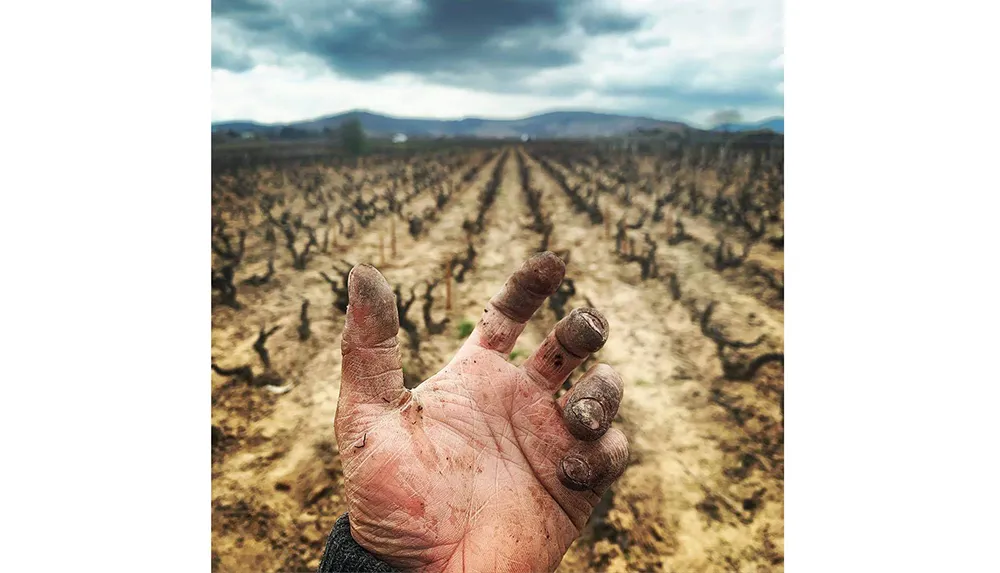
Kei’s cellar is in an industrial park on the outskirts of Beaune. At the back of the building is his small cellar—bigger than a garage, and reminiscent of many Napa micro-wineries I have visited, with music playing continuously through the speaker system. Humak, his tiny Pomerian dog, follows him everywhere. Kei has a handful of miniature stainless steel tanks, as well as accompanying pumps used exclusively for remontage (‘pumping over’) during red wine vinification and for the débourbage (‘clarification’ of the wines). In a segregated backroom are the barrels where he undertakes the elévage (‘raising of the wines’).
His winery has two employees: Kei, who does everything from winemaking to cleaning to managing the harvest team, as well as marketing, sales, finance and company management. He also has a secretary. Although he would eventually like to buy a vineyard, his main ambition is to keep to a “human-sized winery which I can manage with my own two hands—I just want to be able to make a living,” he tells me.
Winemaking Style
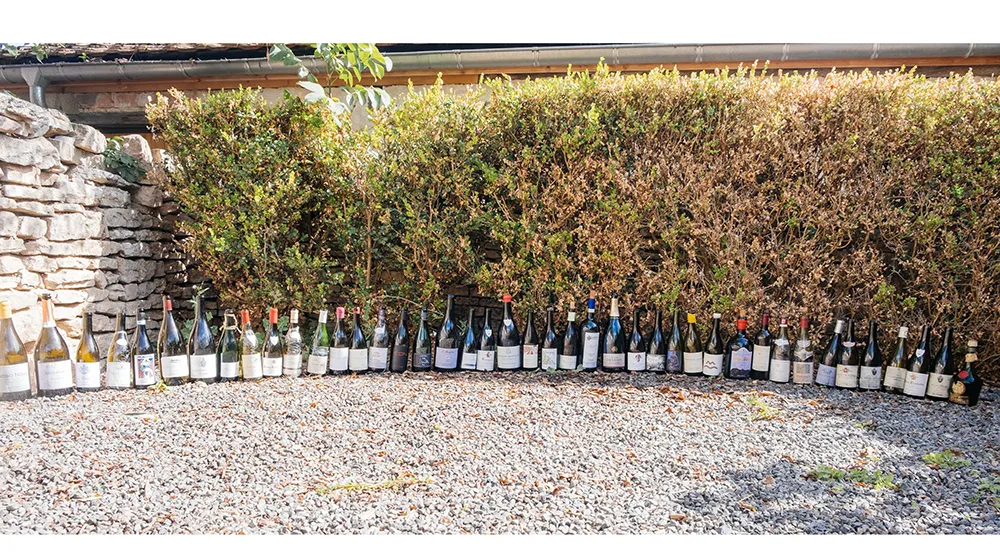
Before tasting the 2022 vintage from barrel, Kei explains his approach to winemaking. Firstly, he uses whole bunches: “I never de-stem the berries.” He prefers a longer fermentation—three weeks—as compared with many of his peers. White wines are fermented in barrels at low temperature. From the 2022 vintage, all the wines are matured for up to 18 months in 90 percent new oak; if he had more space, he would extend this to 24 months for his Pommard plots. He uses seven different barrel makers, and prefers medium-charred oak. He doesn’t add yeast, and rarely adds sugar or acid unless the vintage demands it.
Tasting the wines, I had anticipated that all that new medium-toast oak would dominate them. Bizarrely, I didn’t detect any oak, other than perhaps a little drying on the finish, not helped by tasting the wines at cold temperature. All the wines we tasted were crystalline, pure, with a distinct perfume of roses and petals. Even the wines from Pommard—a village which I often associate with rustic, heavy wines—were delicate and precise. His Gevrey-Chambertin wasn’t meaty or plump. Each wine had energy and vibrancy, and the tell-tale mid-palate lift of all great wines. We also tried the 2021 Charmes-Chambertin Grand Cru which was very impressive: subtle, but full of complexity with a long, exciting finish. None of the wines were deep in colour, despite being infants.
The ‘DNA’ of Kei’s Wines
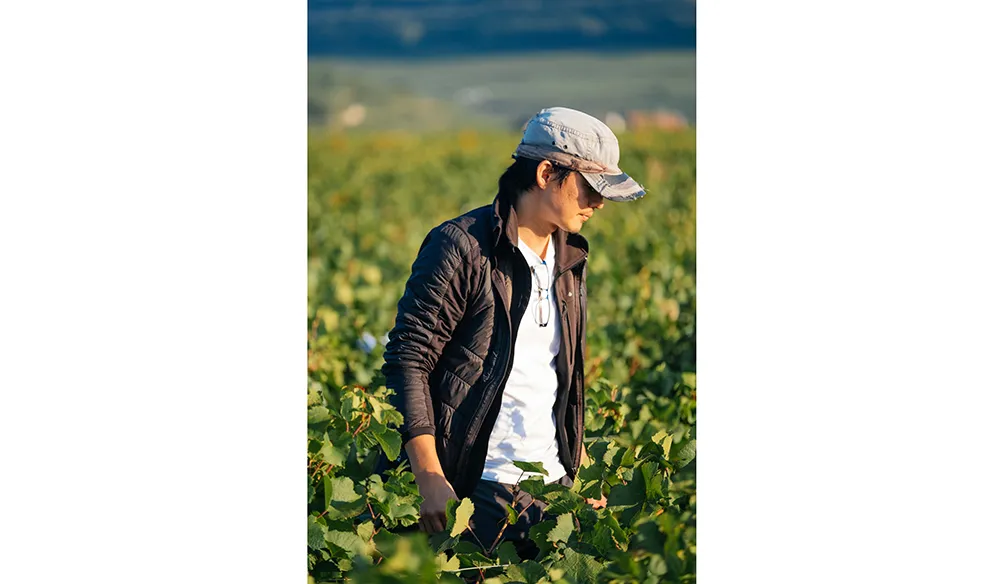
In my desire to be critical, the only constructive critique I could give Kei was that the DNA of the winemaking style might obscure the distinct identity of the terroir. How can wines from Pommard and Gevrey-Chambertin seem so similar stylistically? Light, complex, delicate, profound, subtle and similarly perfumed. Perhaps the lightness of touch might be overwhelmed when pairing with food? I am still astonished that there was no evident impact in the wines from the new oak.
Kei also makes a range of white wines, from across the region, including a Corton-Charlemagne Grand Cru, Meursault Charmes 1er Cru and a Puligny-Montrachet 1er Cru. “If I was to describe my style of white wine, I would say somewhere between Domaine Coche Dury and Domaine Jean-Marc Roulot,” Kei explains, which makes me extremely eager to try them. Unfortunately, Kei’s generosity only extended so far!
Micro-Négociants Versus Négociants
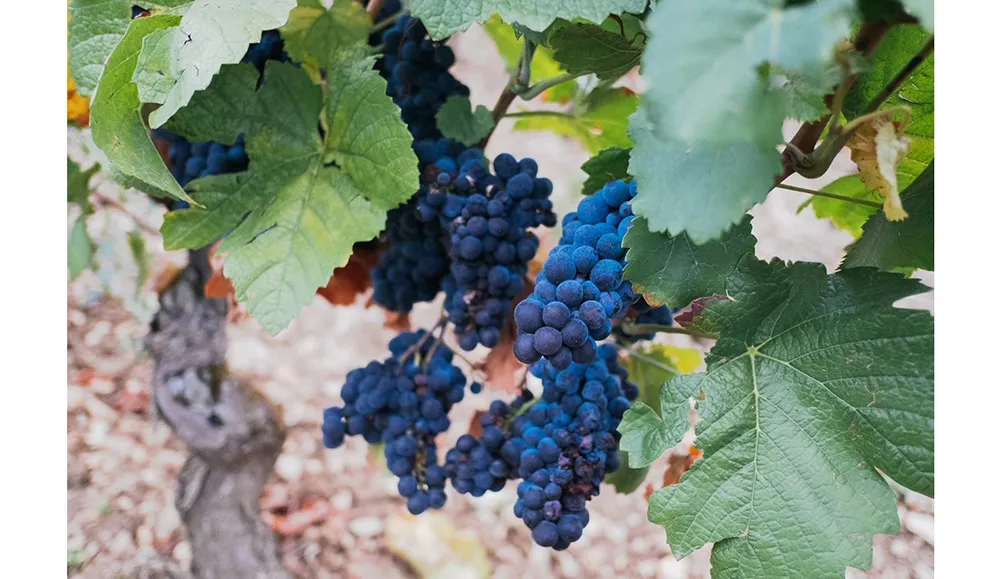
Négociants (as opposed to micro-négoc) are plentiful in Burgundy, with many having long histories—a century or more—of buying wines from estates who historically did not bottle their own. Many of these are well-known names with a storied past such as Albert Bichot, Faiveley, Bouchard, Louis Latour, Louis Jadot and Joseph Drouhin. One way in which they differ markedly from micro-négoc is in terms of production volumes, which tend to be huge by Burgundy standards: hundreds of thousands, if not millions, of bottles per annum. They are also big organisations with large financial and corporate resources.
Kei Shiogai is a micro-négociant (often shortened to ‘micro-négoc’), a term associated with winemakers who usually can’t afford to buy land to create their own domaine. They buy grapes (and, in some instances, wine) from other growers who are happy to sell. Their businesses and production volumes tend to be small. You can normally tell which wines are négociant wines by the fact that the bottle label will either just have the winemaker’s name or the prefix ‘Maison’ (rather than ‘Domaine’).
Snobbishness Shown to Micro-Négoc

In Burgundy, there’s a certain snobbishness shown to micro-négoc by vigneron (‘growers of wines’ who farm the land and make the wine). And, not without good reason. Most of the best vignerons do very little in the winery, and focus all their attention on the vineyard. Jean-Yves Bizot and Charles Lachaux are prime examples of this. Minimal intervention in the cellar is justified by their focus on growing the highest quality fruit each year.
To some extent, micro-négoc take whatever fruit they can get. They are reliant on landowners allowing them to buy their fruit—however well or otherwise the vineyard has been farmed, and irrespective of whether the fruit comes from the lesser quality terroir in their typically small plots of crus. For this reason, vignerons might question how it’s possible for the micro-négoc ever to make wine at the standard of the domaines, unless they are creating some recipe in the cellar that goes against the core philosophy of the better vignerons.
Of course, the top Burgundy vignerons have mainly inherited their land from families who have spent multiple generations building their estates. Perhaps they have been able to grow their holdings by using their cash flow or asset values, or in some instances metayage or fermage contracts from wealthy investors and landowners (as in long term rental agreements). In some instances, wine loving investors have funded vineyard expansion in return for allocation rights. Domaine Dujac is a good example of this for some of their crus.
For those who did not inherit the land—especially those coming from a sommelier background in Tokyo, such as Kei—the only way of buying into the Burgundy dream is through becoming a micro-négociant. These include Mounir Lucien, the Lebanese micro-négoc whose Maison is called Lucien La Moine. Or Philippe Pacalet, a long time winemaker for other estates who was an early pioneering micro-négoc. Or Benjamin Leroux, who now also owns some of his own vineyards. Or Mark Haisma. And, of course, Olivier Bernstein, perhaps the standout success in Burgundy, who sells his wines at extraordinary prices.
Exorbitant Land Prices
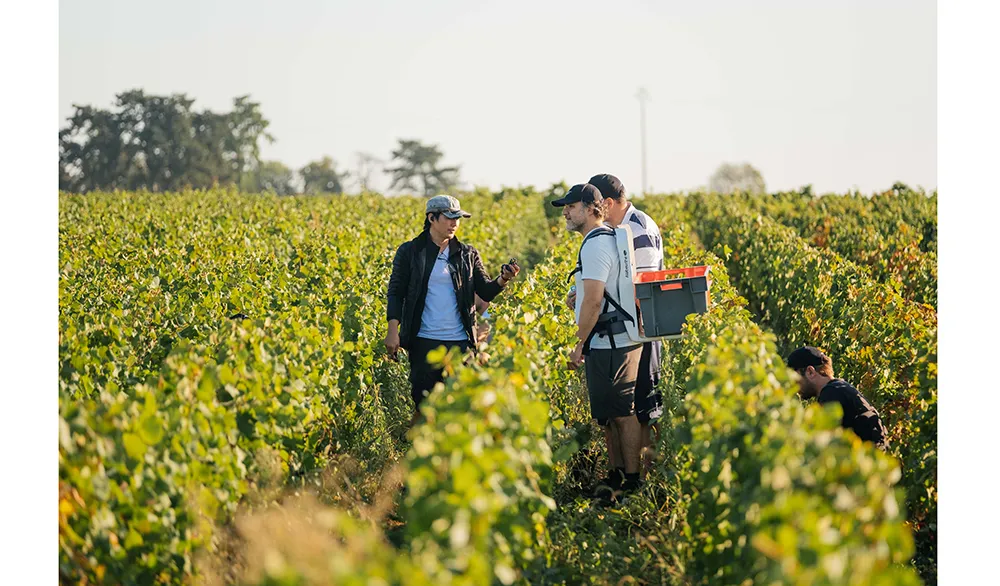
Vineyard land values in Burgundy are the highest in the world. Certain parcels of grand crus have allegedly changed hands for in excess of £40 million per hectare. Even lowly village crus can sell in the millions per hectare. I am always fascinated to visit Maxime Cheurlin at Domaine Georges Noëllat in Vosne-Romanée. When we sit in his living room area—a glass veranda looking out onto a fairly small patch of grass—I am reminded that his garden is actually classified Vosne-Romanée 1er Cru vineyard, backing on to the famed Grand Cru of Domaine de la Romanée’s La Tâche Monopole. Maxime’s small garden would probably be worth well in excess of £1.5m if vines were planted instead of grass. When I asked Maxime why he doesn’t plant vines, he told me—very matter of factly—“where would my dog play?”
Although négociant wines are viewed by some as inferior to domaine wines, many vignerons—who already own highly respected domaines—have decided to expand their businesses (or carve out a business line separate and apart from family ownership) by creating a négociant range of wines: Lalou Bize-Leroy, Marianne & Pierre Duroché, Charles Van Canneyt, Maxime Cheurlin, Charles Lachaux and Arnaud Mortet to name but a few. Given the name recognition of the vigneron, collectors will often ignore the fact that the winemaker hasn’t grown the grapes, and buy into the brand as a guarantee of quality and potential secondary-market value.
Inability to Dictate Terms

The world of the micro-négoc is complex to understand, and often opaque. There is no one size fits all approach to how they operate and contract for their grapes. For instance, Kei Shiogai told me he has legal agreements with all the estates he buys grapes from, but the contract terms are year-to-year. In other words, there is no certainty as to whether they will continue beyond one harvest cycle. Indeed, perhaps his favourite wine in his range, the Charmes-Chambertin Grand Cru, will not be made going forward as the family who sold him the grapes have recently told him that their son has decided to make wine from this parcel.
In Kei’s case, he has some, but limited, influence over the grape growing methods used in the vineyards. For instance, “I can ask the grape growers to reduce their treatments of herbicides, but I can’t force them to do it,” Kei tells me. “Many allow me to pick my own harvest date and use my own team of harvesters, but not all of them do. This is crucial as I tend to harvest a week earlier than most. I only pay for the grapes I either harvest or, if I’m not allowed to harvest, then those grapes which I accept—allowing me to exclude unripe or rotten grapes.”
For a micro-négoc , determining yields in the vineyard is not as relevant or precise as would be the case for a domaine wine due to the complexity of the contract terms. However, Kei postulates his yields to be around 45 hectolitres per hectare for everything except grand cru plots, which come in closer to 35 hectolitres per hectare.
When I ask Kei whether it’s fair to say that domaines would never sell him anything other than grapes from their least prized plots, he contemplates his response, finally answering: “I suppose that’s true for the grapes I buy from the better domaines. However, if the domaines have good yield, I can buy the overflow as they don’t physically have enough vats to make extra wine. For the grapes I’m buying from lesser estates, they often don’t make the wine themselves, but sell to me at higher prices than they would typically obtain in the market. I think it works out to be a win-win business for both parties.”
From Tokyo to Burgundy
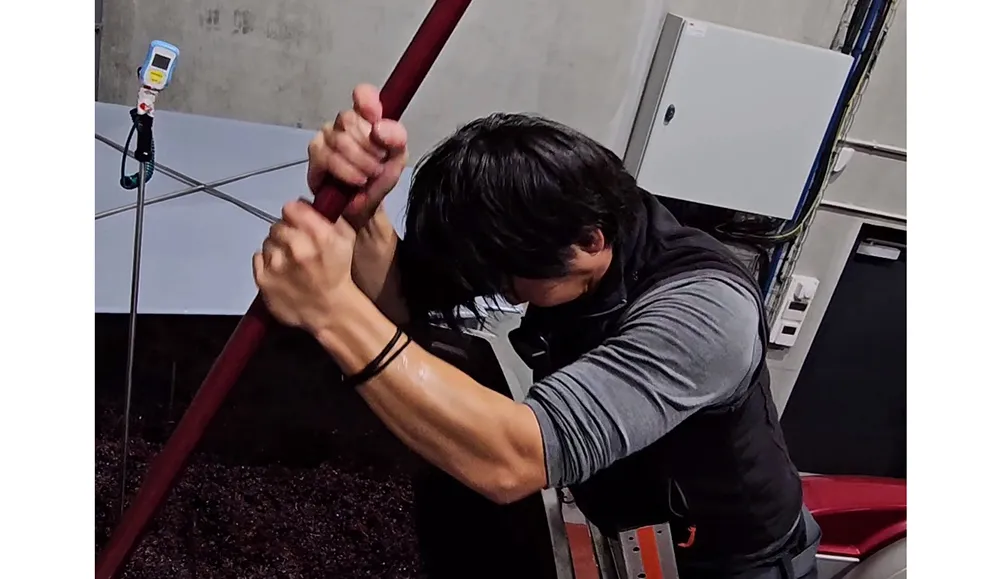
Kei’s path to Burgundy began in Tokyo, where he was raised with his brother, now a practising lawyer. Studying economics and politics at university, he chose to become a sommelier in a well-regarded wine bar. This is where he fell in love with Pinot Noir and Chardonnay wines, particularly from Burgundy. Despite the language and cultural barrier, “I decided to fly to France in 2013 and learn about winemaking, studying firstly for my BPREA in Beaune and then my DTO Oenology Diploma in Dijon.” In between, he studied French and became sufficiently proficient to earn his first job in the cellar with micro-négoc , Philippe Pacallet, in 2014, while concurrently working in the vineyards for Domaine Jean Claude Rasteau in 2015, the estate first associated with biodynamic agricultural practices in Burgundy.
His first employer, Philippe Pacalet, subsequently started to farm some of his own vineyards. Pacalet brought in Kei on a full-time basis to work in those vineyards. In 2019, Kei was hired by famed Domaine Armand Rousseau in Gevrey-Chambertin, working both the harvest and in the cellar. In February 2020, Domaine Jean-Marc Roulot, an equally famed white wine Burgundy estate, hired him to work in their vineyards until he left in 2022 to focus solely on making his own wines, a side-project that he had begun in 2020, buying grapes from the villages of Pommard and Gevrey-Chambertin.
“I don’t care”
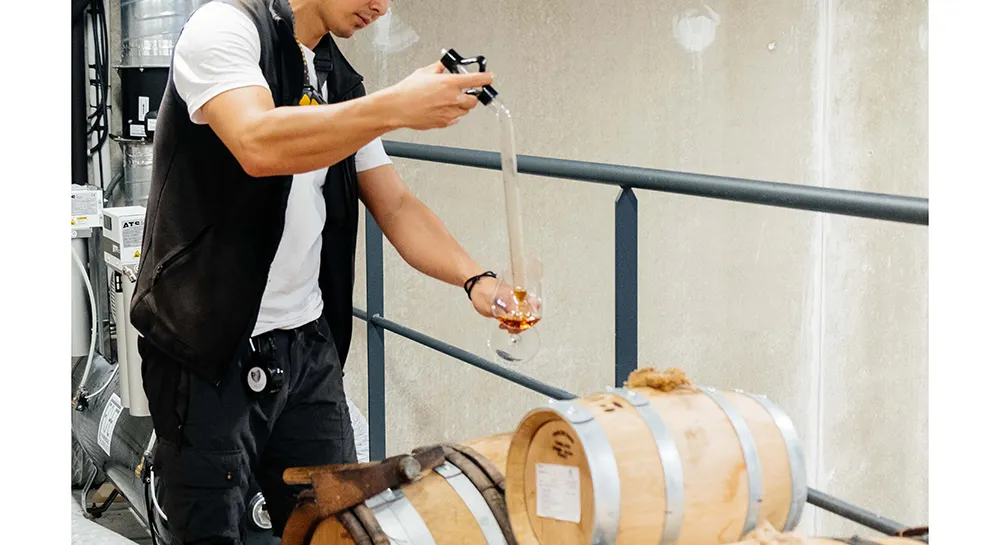
Kei is reticent, and not particularly happy, about associating his wines with the famous domaines that he apprenticed with. Indeed, in this regard, his temperament is out of keeping with the stereotypical Japanese tendency to laud their former bosses. “The reason I don’t highlight my resume is because it was my fellow workers in the domaines who taught me everything I know, not the head of the domaines,” he explains. “I don’t want my wines to sell because I worked here or there. They should stand on their own.” Digging deeper, he tells me: “I don’t want to bow to anyone. I’ve had no contact with my former employers, and I don’t care. I make my own decisions, irrespective of the approach of these domaines.”
Being Japanese—an ‘outsider’ in the familial world of Burgundy—and without the direct support of his famed employers, building a business must have seemed a near impossibility. For starters, how on earth was he able to get anyone to notice his new, tiny project? “I started to commercialise my wines in 2021,” he says. “The restaurant owner of Le Soufflot de Meursault, Charles Bufane, had tried my very first Pommard wine and decided to buy it for their wine list.
“Then Charles opened my wine whenever he was asked by professionals for a recommendation of a new wine to taste. As people started to try it, I received many requests to sell them wine. Today, I only produce 10,000 bottles from 16 separate cuvées across the Côte de Nuits and Côte de Beaune. I sell my wines in Asia, Denmark, Switzerland, Italy, Spain, Belgium, France and the UK.” Interestingly, Kei doesn’t currently sell wine to the USA: “I simply don’t have enough wine to sell in more territories, and suspect I won’t have anytime soon,” he tells me.
High Price Tag
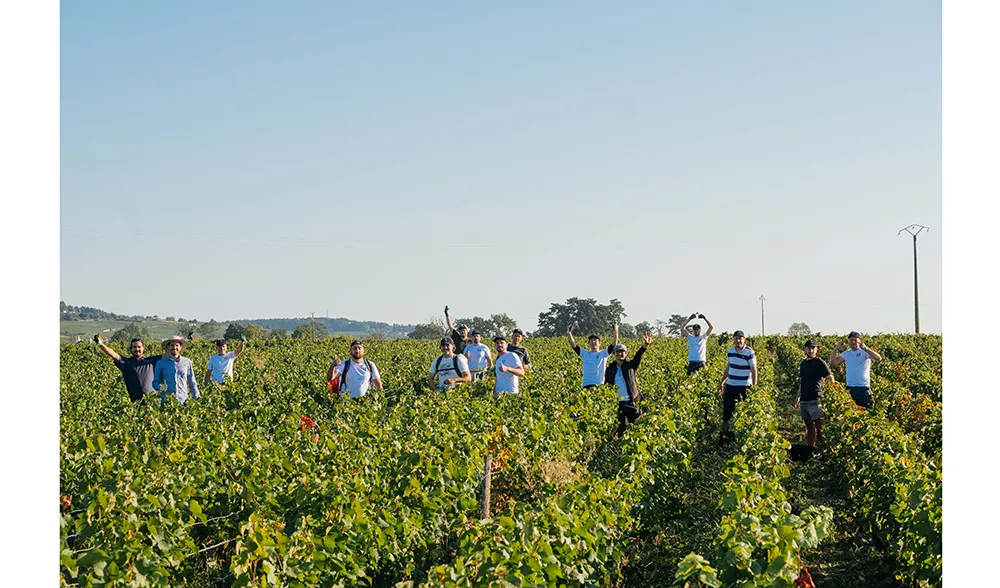
Kei’s wines are not cheap. His Charmes-Chambertin Grand Cru sells in excess of £1,200 per bottle, the Pommard for £550-plus and even his Bourgogne Blanc is around £400 per bottle. The price is reflective of both scarcity and the extra cost burden on micro-négocs to buy grapes. However, this is not deterring buyers. Indeed, there is now a loyal base of Shiogai fanatics.
Remarkably, Kei’s regular harvest team of up to 25 people must be the most uniquely selected in the wine world: always the same pickers made up of his biggest fans—private collectors and wine lovers, many of whom are corporate titans—who stay with him over the course of three weekends (Friday-Sunday) in exchange for the right to purchase an allocation of his wines.
The ‘Keyser Soze’ of Burgundy
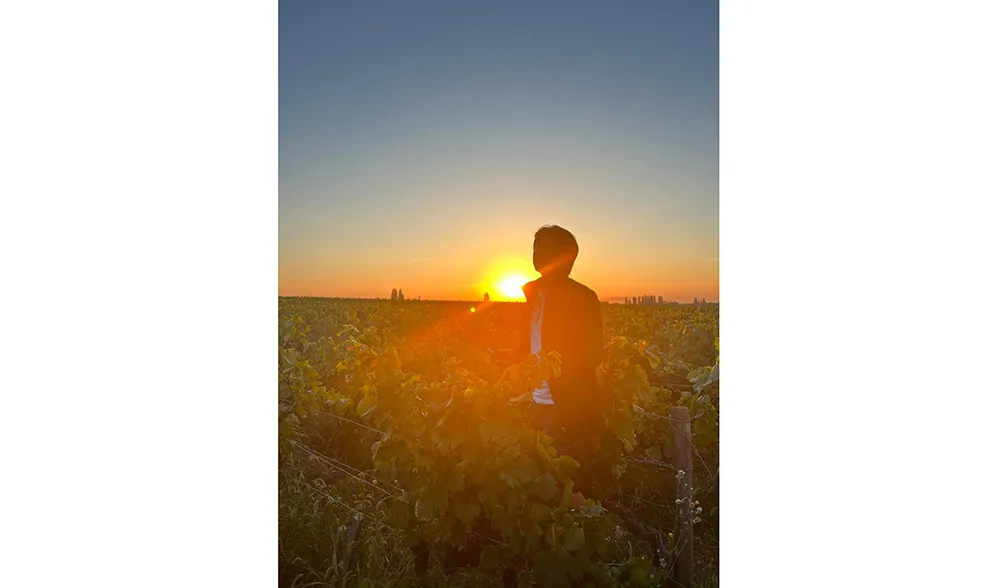
Kei is 36-years’ old and doesn’t like having his picture taken. He tells me, “I want to be discreet so that people don’t come up in the street to say: ‘Hey, are you Kei? Can I buy some of your wines?’”. If you try to find a picture of Kei, you’ll notice that, like the ones here, they are all unrevealing—generally a side-profile or obscured by a well-placed hat. Kei is the ‘Keyser Söze’ of Burgundy. However, as Kei is the only Japanese winemaker in Burgundy, I suspect it doesn’t matter if people know what he looks like! Indeed, when we went to lunch at Ma Maison in Beaune, he was recognised by at least two tables.
Kei might be Japanese, but he’s a true Burgundian at heart. He’s very direct and not afraid to say no. He’s lost a bit of his Japanese shyness and developed the Burgundy vigneron default position of answering requests by saying “non”, before considering whether to change his mind and say, “oui”.
“I need to pay the bills”
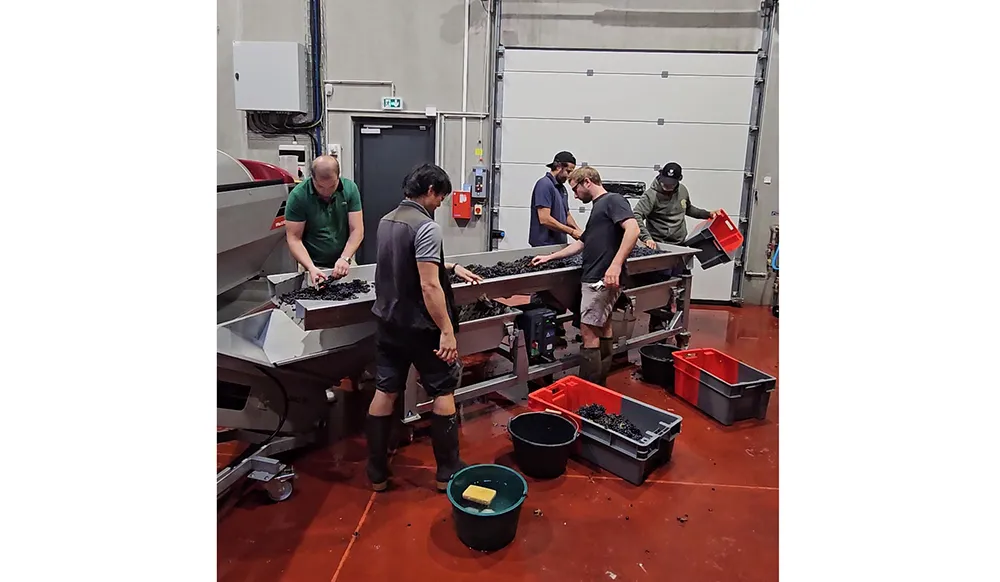
As a micro-négoc , Kei has more time on his hands than a typical vigneron. Kei doesn’t work in the vineyard, the place where he gained most of his work experience prior to building his own business. Marketing his wines is not easy as he doesn’t have enough bottles to taste with press, exporters and collectors. “I need to pay the bills, and giving away or opening bottles when I have so few just doesn’t make financial sense,” Kei explains when I ask if we could taste some back-vintages. “What I want is stability—financially, and in regard to securing the most prized grapes that I can source to make wine. But that’s not my sole objective. Whilst I cannot afford to buy my own vineyards today, I really want to show wine lovers that I can still make very high-quality wines”.
An Economic Winter is Coming

Many Burgundy vignerons I speak to are concerned that there will be a collapse in wine prices thanks to a lethal combination of the global economic downturn, high interest rates, wars in the Middle East and Ukraine, as well as high yielding vintages from the 2022 and, especially, 2023 harvests. Everyone is talking about it. They fear that there will be too much wine being sold at exorbitant prices for consumers to stomach. One esteemed vigneron from Vosne-Romanée who makes some of the highest priced wines in Burgundy (and the world) tells me: “It could be a blood-bath—I’m extremely worried.” When I ask him whether he is going to lower his prices given his concerns, he quickly snaps back, “I’m worried for my neighbours—I have more demand for my wines than I could ever cope with.” How reassuring!
The wines that are expected to bear the brunt of any impending downturn are those from historically second-rate (or lesser known) estates and micro-négoc whose prices have gone stratospheric in the last three to five years. Of course, micro-négoc typically make very small quantities of wine. Kei has less than 850 cases to sell each vintage. In spite of this, although cult producers like Kei Shiogai might be able to continue finding buyers for their new vintage wines, it remains to be seen whether the secondary market prices of their wines will be hard hit should an economic winter hit Burgundy.
The Best Three Wines Kei Believes He Has Made
Gevrey Chambertin Baraques 2020
Charmes-Chambertin 2021
Meursault Tesson 2022
Kei’s Desert Island Choices
Book: Kenji Miyazawam, Kinjirou Ninomiya
Luxury: My 16th century Tastevin
Film: The Godfather Trilogy
Band/musician: Pony Pony Run Run
Activity: On a desert island? I would wait to die!
Kei on Kei
How would you describe yourself? I’m eager to make people happy by keeping quality at a high level.
How would you describe yourself to your girlfriend? Dedicated to my work.
What’s the craziest thing you’ve ever done? When I studied French and viticulture, I only ate pasta with already-cooked sauce every day for one whole year.
What’s the craziest thing you would like to do? I’d like to organise and invite leading journalists and influencers to Burgundy for a big blind wine tasting competition exhibiting all the best-known wines from Burgundy.
What’s the best wine you’ve ever tasted? I like wine in which I can feel passion, emotion and where I can judge that a lot of time has been dedicated to make the wine.
Death Row wine request? If I’m being executed in the morning, I want to drink a bottle of Kei Shiogai Charmes-Chambertin Grand Cru 2021.
Lewis Chester DipWSET is a London-based wine collector, member of the Académie du Champagne and Chevaliers du Tastevin, co-founder of Liquid Icons and, along with Sasha Lushnikov, co-founder of the Golden Vines® Awards. He is also Honorary President and Head of Fundraising at the Gérard Basset Foundation, which funds diversity & inclusivity education programmes globally in the wine, spirits & hospitality sectors.

